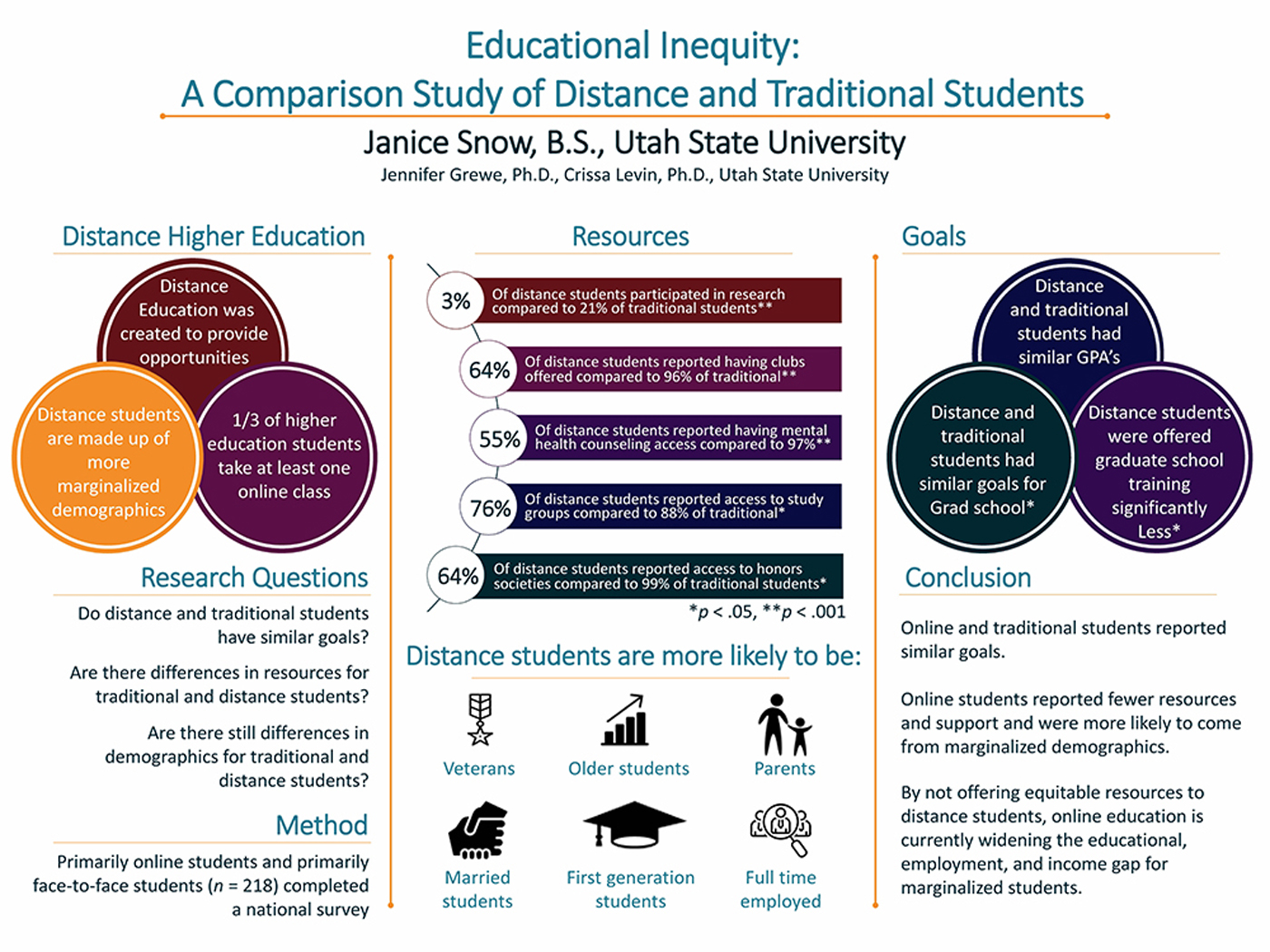Educational Inequity: A Comparison Study of Distance and Traditional Students

Abstract
Statement of the problem: Online higher education enrollment increased from 21.4% of students taking at least one online class in 2007, to 32.5% of students in 2012 (Kentnor, 2015). To date, there is no available research regarding differential resources related to distance and traditional students in traditional university settings, however, logic dictates that online students may not receive the same resources as traditional students. Previous research found that online-only students make up a differential demographic than traditional students, including higher rates of women, and those with families, higher rates of veterans, higher rates of individuals with disabilities, higher rates of individuals from lower socio-economic classes, and higher rates of individuals who are more likely to work full-time (Best Colleges, 2018; Ortagus, 2017; Seaman et al., 2018). These systematic differences in resources while in school might be promoting systems of inequality for those who are seeking educational opportunities via distance education programs. Online education has grown at a fast rate which means that the data on online education demographics needs to be re-assessed frequently. In addition, it is necessary to determine whether the logic follows: in the event that the demographics of distance students remain unchanged (that is this group accounts for underrepresented minorities at a higher rate than traditional education), and it is found empirically true that distance students do have fewer resources but also similar goals, then it could be concluded that distance education may be a well-intended path to inequity.
Procedure: The current study collected up-to-date information on student demographics, available resources, and goals of online and face-to-face undergraduate students.
Subjects: Undergraduate students (n=214) were recruited nationally through listservs and social media recruitment to participate in a 15-minute online survey.
Results: Online students were more likely than face-to-face students to be veterans, older, parents, first generation college students, and full time employed. Also, online students reported goals to go to graduate school at similar rates as face-to-face students. Social resources such as clubs, honors societies, and study groups were significantly less available to online students compared to face-to-face students. Resources that promoted student success such as library resources and software, mental health counseling, and orientations were reported as being offered significantly less to online students. Mentoring and research opportunities were also reported at lower rates by online students compared to face-to-face students.
Conclusions: In our sample, online students consisted of a differential demographic of veterans, working students, parents, and older students who had similar goals to go to graduate school as their face-to-face counterparts. Online students had far less resources available to help prepare them for their goals. Therefore, online education is currently promoting inequity in education and employment which further widens the economic gap for many already marginalized students. Further discussion and research are needed in this area to help advocate for support for distance only students.
Keywords: distance students, online students, resources, inequalities, mental health

